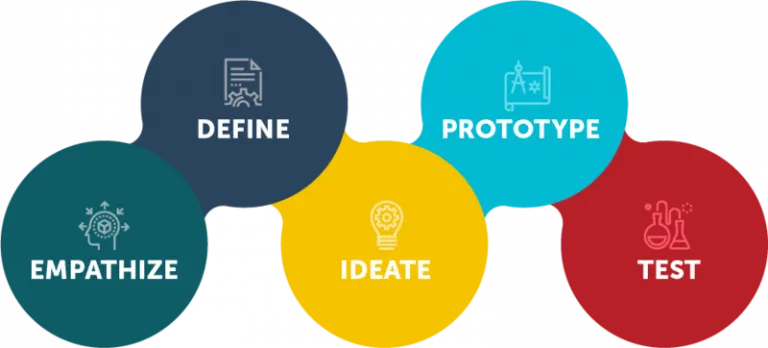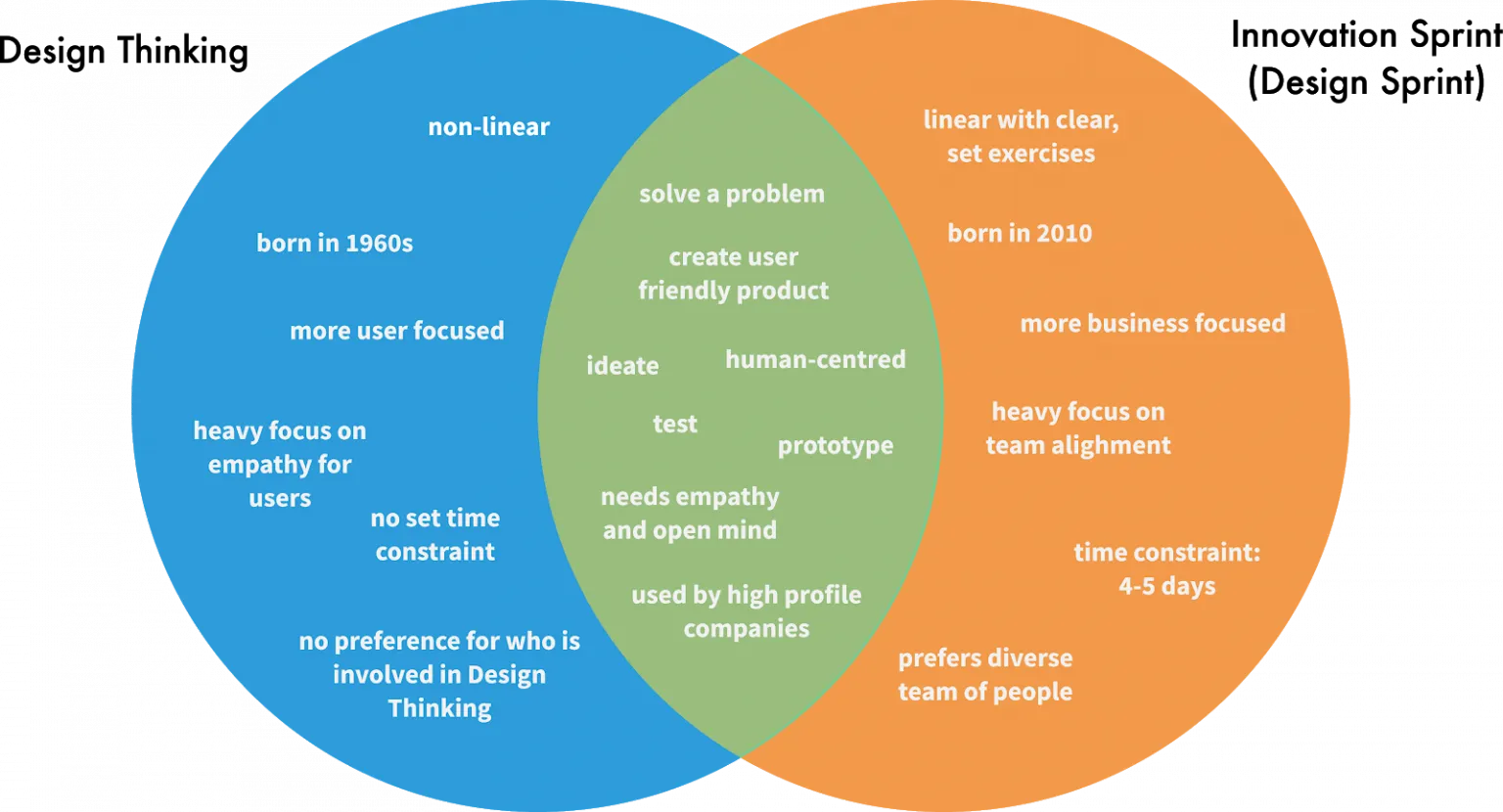UI & UX Design
Design Thinking vs. Design Sprints

You’re not alone when it comes to thinking that there’s a blurry line between the Design Thinking and Design Sprints. In this post, we’re going to set things straight. We’ll quickly break down each method (no more confusing terms, we swear!) and compare the similarities and differences.
What is Design Thinking?
Design Thinking is an approach that puts the user first-and-foremost in the process of innovation and design. What this means (in even simpler terms) is that it all starts with the user. What are their challenges and struggles? What are they seeking? What do they want and need?
There are many variations of Design Thinking, but fundamentally it is made up of five phases.

Phase 1 – Empathise
Aim: Understanding your users’ pain points and needs.
How to: User research and empathy tools.
Phase 2 – Define
Aim: Define, precise and narrow problem.
How to: Using information gathered from understanding your users, pinpoint the problem or problems you want to focus on.
Phase 3 – Ideate
Aim: Ideating for the solution.
How to: Generating innovative ideas from user research which will allow you to think outside the box.
Phase 4 – Prototype
Aim: Creating a prototype (aka, an inexpensive and scaled-down version of your ideal finished product).
How to: However you want! It doesn’t have to be digital… You can prototype anything!
Phase 5 – Test
Aim: Having informed feedback about your product/solution.
How to: Doing user testing and organising feedback to plan the next steps for improvements
These phases are not always sequential – it’s common to run the phases out of order, run them parallel or iterate on certain phases. The aim is to get closer to a solution that would give your product the thumbs up from your user.
What is Design Sprint?
Also known as an Innovation Sprint, a Design Sprint is a 4-5 day approach that aims to validate ideas, prototype an idea and test that idea. The Innovation Sprint was created by Jake Knapp, author of Sprint!
Innovation Sprint has been used in many high profile companies, including Google, Slack, Lego, etc. Each day consists of a clear and set plan of activities that have been tried and tested for the purpose of the sprint.
You begin the sprint with a team of ideally 5-7 people from different departments or teams within your company. During the sprint, your sprint team will select a target area to focus on and ideate using a series of activities. By the end of the sprint, one chosen idea will be prototyped and tested with your target users.
You’ll then have feedback and direction on what to do next. It’s fast and dirty, but so efficient. We won’t go into too much detail as to what each day consists of, but if you DO want to know, please check our page on Innovation Sprints here.
Now that you’ve got a good idea of both approaches, let’s compare the two!

What are the similarities?
Other than being used and raved about by high-profile companies, Design Thinking and Design Sprint share a goal of solving a problem with an end-user in mind. Understanding the importance of empathy and an open-mind is key to delivering success in both approaches.
Innovation Sprint was originally based on the elements of Design Thinking, so they both share similarities in the stages of ideation, prototyping and testing.
What are the differences?
For Design Thinking, there is more focus on understanding the end-user and defining the solution around their needs. Innovation Sprint, on the other hand, focuses on delivering the solutions with a holistic approach to the product, business and customers. This is why diversity within the team is strongly suggested for an Innovation Sprint. A solution is formed from understanding and seeing different perspectives within the diverse group. This keeps the business in mind, rather than solely focusing on user needs.
Another key difference is the time constraint. Unlike Design Thinking, Innovation Sprint has a set time constraint of 4-5 days and has little room for flexibility. It is designed to keep the momentum going and guarantee results by the end of the week.
Both of these approaches have been championed by the best of the best companies in the world and there’s no doubt that they each have their own benefits and purposes. When choosing which approach to go for, much of it depends on your company’s available resources and whether you are seeking to define a more business-focused or user-focused problem.
If you’d like to work on fresh, inspiring projects with us using Design Thinking and Design Sprints, get in touch today!
Book an Info Session
Feeling inspired? Take the first step and book in an info session with one of our team